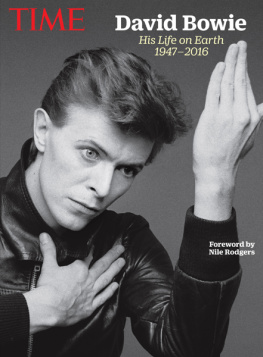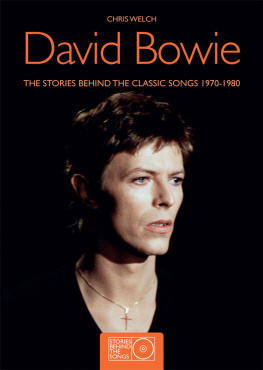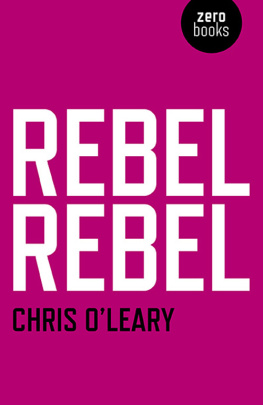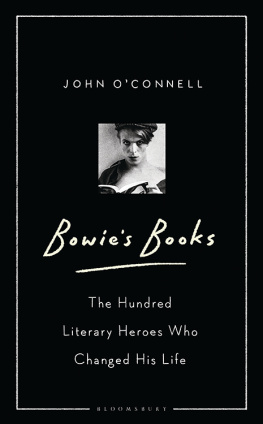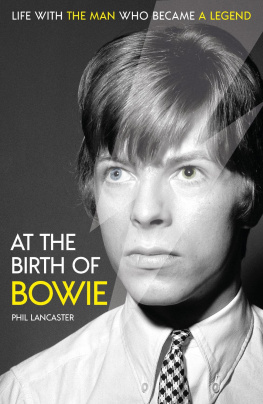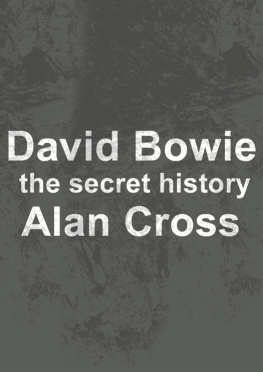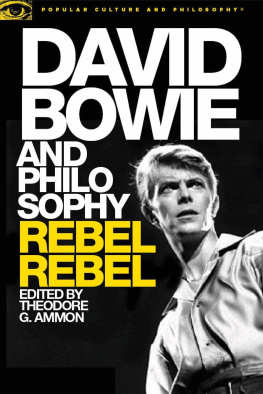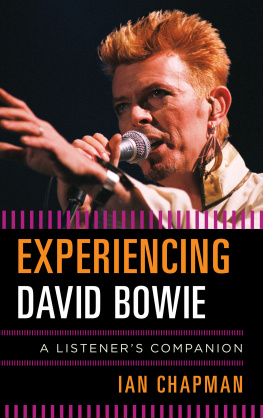Psychedelic Suburbia
Mary Finnigan
Psychedelic Suburbia
David Bowie and the Beckenham Arts Lab

Copyright 2016 Mary Finnigan
All rights reserved.
ISBN-10: 0986377023
ISBN-13: 978-0-9863770-2-0
Library of Congress
Control Number: 2015944966
Cover photo: Ray Stevenson
David Bowie at Flat 1, 24 Foxgrove Road,
Beckenham, August 1969
Cover design: Keith Carlson
First edition
Jorvik Press
PMB 424, 5331 SW Macadam Ave., Ste 258,
Portland OR 97239
JorvikPress.com
ABOUT THE AUTHOR
Mary Finnigan was born in Manchester, England just before the start of World War II. Her earliest memories revolve around air raid sirens howling in the night, being dragged out of bed and carried into a shelter in the family dining room. This disturbed start probably contributed to her rebellious nature and the fact that she failed to live up to the expectations loaded onto a young woman in the 1950s.
Marrying an older man at eighteen as an escape route from a controlling mother, she produced two children before bolting from Manchester to London, deserting her husband and landing a job as a fashion writer on the Daily Mirror . Her print journalism career included feature writing at the Daily Sketch, Daily Express and freelance work at the Sunday Times .
During a five-year holiday from the five-day week she met David Bowie. This book tells the story of their adventures together and the legacy from them which is vibrantly alive almost half a century later.
Returning to her journalism career, she worked as a reporter, editor and producer at Visnews, Independent Radio News and the London Broadcasting Company. She now contributes to national newspapers, online publications and BBC radio.
Mary lives in Bristol in the west of England with her partner, Chris Gilchrist. She has three adult offspring and three granddaughters, is a practising Tibetan Buddhist in the Dzogchen tradition, an active feminist campaigner and an unreconstructed hippie.
Acknowledgments
The list of people who supported and helped me is long and I apologise for the ones I miss here. For starters theres Chris, who nagged me to get on with it gently and persistently over several years. Then theres my lama, Choegyal Namkhai Norbu, for whom I have deep respect and gratitude and Peter Stansill, who is both my publisher/editor and long-time friend. This story was written nearly half a century after the events. Mostly I relied on my memory, which is by no means reliable. So if I got anything wrong, misinterpreted situations and forgot things that happened its entirely my fault and I apologise.
Lots of kind people shared their photos, memories, reminiscences and points of view, including Christina Ostrom, Keith Christmas, Richard Raven, Tony Visconti, Natasha Ryzhova Lau, Dave Walkling, James Plummer, David Bebbington, Ian Anderson, Roger Bacardy, Mark Adams, Craig Hamlin, Chantal Cooke, Lynn Evans Davidson, Alison Fraser Black, Angie Bowie, Lara Owen, Catriona Mundle, Peter Culshaw and Cliff Watkins. Special thanks to Wendy Leigh, Jack (Amory), Iris and Aurora Kane, Bill Liesegang, Ray Stevenson, Caroline Finnigan, Richard Finnigan, the late Peter Finnigan, Daniel Taghioff, Alva Taghioff and (of course) David Bowie. Very special thanks to Wendy Faulkner, whose research skills and enthusiasm were invaluable, and to Paul Kinder for his expert proofing and fact-checking.
Bristol, England and
Valle Gran Rey, La Gomera, Canary Islands
2015
Photo credits: David Bebbington (47, 51, 70, 102, 111, 114, 116); The Francis Frith Collection (4); Gaz de Vere (173); Ray Stevenson (cover, 8, 22); Alva Taghioff (164); Dave Walkling (66, 67); Allan Warren (36); Cliff Watkins (159).
For Chris
With thanks for your love and
the profound pleasure
of your company
Contents
Forewords
This is the story of something wonderful that happened in a London suburb during the tail end of the 1960s. It is a story that touches on the lives of several famous people, including one iconic musician. But it is mostly a story about a group of people who brought enchantment into a deeply conservative community.
We were young, we were idealistic, talented and irreverent. We were torchbearers for sex n drugs n rock n roll. We did not care about social conventions and we broke many rules, but much to our surprise nearly everyone ended up loving us.
Our influence percolated across south London. More than forty-five years later it is still celebrated as a moment in time when we carried the echoes of the 60s wakeup call into fresh pastures. We planted our seeds on fertile ground because the young people of Beckenham and beyond were ready for change and somehow we also managed to charm their elders. Well, most of them.
Beckenham is an affluent suburb that sits comfortably on the outer fringes of south London. Originally on the northernmost edge of the county of Kent, it became part of the Borough of Bromley in one of several local government realignments instigated with the creation of The Greater London Council in 1965.
Beckenhams history dates back at least to 1086 when it appears in the Domesday Book referred to as Bacheham. This probably means Beohhas village in Anglo Saxon.
Beckenham soon developed into a significant village administered from the Manor House opposite the church.
In 1773 John Cator became Lord of the Manor. When the railway arrived from London in 1857 the Cators realised their estates were ripe for residential development, and soon suburban villas were spreading out from the new station.
Built in the style of an Indian colonial town, with wide tree-lined avenues and large detached houses in generous gardens, they were designed to appeal to the wealthy, looking for a home out of London but convenient for the city. As this market became saturated, the financially astute Cators turned to building smaller properties. Retaining the freehold, they were able to keep control of the development of a sizeable part of the town.
Following World War II, much of the Cator estate was redeveloped with modern houses and flats. This process has continued elsewhere in the town, although some areas remain the same as they were between the two world wars.
Beckenham is overwhelmingly bourgeois and has elected an unbroken lineage of Conservative members of parliament since 1950. It could hardly be described as the perfect location for revolutionary activity, but that is precisely what happened. Not violent revolution, but a revolution of attitudes.
The parental and pensioner generations in Beckenham ought to have been outraged by our activities. Elsewhere in Britain the young people of the 1960s were at loggerheads with their elders. Mums and Dads were in despair over long hair, Afghan waistcoats, rock n roll, free love, demonstrations, dropping out and, most of all, drugs.
In turn, their offspring suffered from extreme incomprehension they simply did not understand why their lifestyle caused so much anguish. Its love, peace and freedom man the things you say you want so why are you so upset? All the parents could do was repeat the get a job mantra, which to your average hippie was the equivalent of offering them a cup of cold vomit.
But it didnt happen this way during the spring, summer and autumn of 1969 in Beckenham. Maybe the magic had been lying dormant beneath the respectable surface and all we did was tease it into life. Perhaps it was demographic it occurred because the majority of Beckenham people at that time were mellow and laid back and they did not want to squabble with their kids.
But I suspect it had something to do with the fact that there was an aura of innocence around our manifestations we were open, nave and devoid of guile. We wanted to have fun and we wanted everyone else to have a nice time, too.


